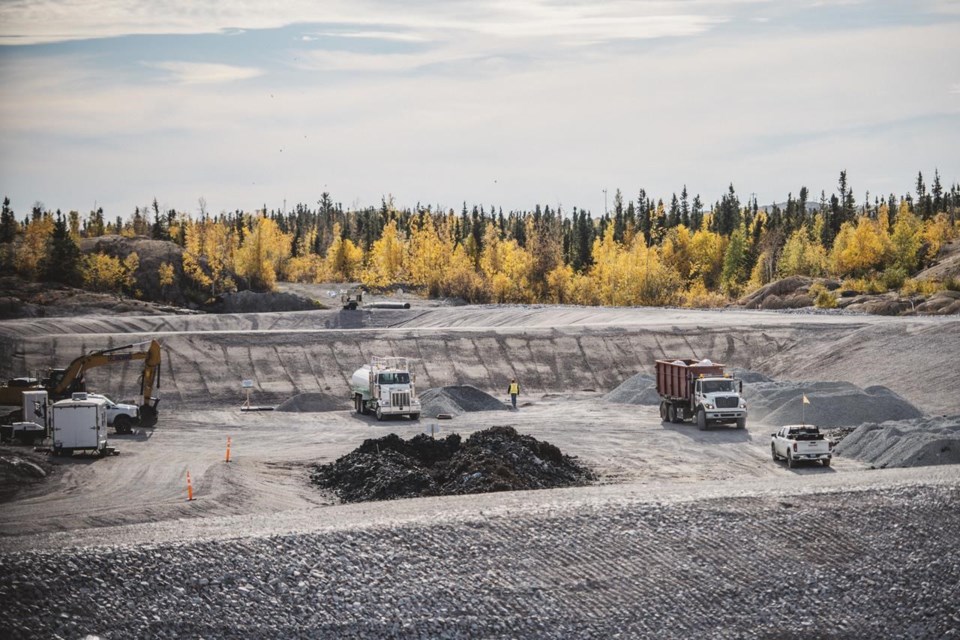YELLOWKNIFE — The federal government is responsible for more than 20,000 contaminated sites in Canada.Â
Here is a breakdown of the top five most expensive environmental cleanups where taxpayers are footing the bill. In some cases, public cost estimates have not been updated for several years.
Giant Mine
Estimated to cost $4.38 billion between 2005 and 2038.
The former gold mine within Yellowknife city limits had several owners during operations from 1948 to 2004. The federal government took responsibility for environmental liabilities in 1999, when Royal Oak Mines Inc. went into receivership.
Cleanup at the site, which spans nine square kilometres, includes demolition of the townsite, freezing underground chambers containing 237,000 tonnes of highly toxic arsenic trioxide dust, filling open pits and treating contaminated water.Â
Active remediation began in 2021 and is expected to end in 2038. The site will then require perpetual care and maintenance.Â
Faro Mine
Estimated to cost $1 billion over 15 years.
Located in south central Yukon, it was once the world's largest open pit lead-zinc mine. It spans 25 square kilometres. Seventy million tonnes of tailings and 320 million tonnes of waste rock were left behind.Â
The mine was abandoned in 1998 after Anvil Range Mining Corporation declared bankruptcy. The federal government took over the site in 2018.Â
A remediation approach was selected in 2009 and submitted to the Yukon Environmental and Socio-Economic Assessment Board for review in 2019. The proposal includes covering ore, waste rock and tailings, re-vegetation, diverting clean water away from contaminated sites and treating contaminated water.Â
Port Hope Area Initiative
Estimated to cost $1.28 billion over 10 years.
Roughly 1.7 million cubic metres of historic low-level radioactive waste in the municipalities of Port Hope and Port Grandby, Ont., needs to be managed. The contamination resulted from radium and uranium refining by Eldorado Nuclear Limited, a former Crown corporation, and its predecessors from the 1930s to the 1980s.Â
Between 2016 and 2020, approximately 1.3 million tonnes of waste and contaminated soil was removed from the former Port Grandby waste management site and relocated to an aboveground mound. That was capped and closed in September 2021.Â
The Port Hope project involves the cleanup of approximately 1.2 million cubic metres of waste at various sites throughout the municipality. It is being relocated and contained in a separate aboveground mound.Â
Esquimalt Harbour
Estimated to cost $162.5 million. Roughly $214 million has already been spent.Â
Located in Victoria, contamination accumulated in the harbour seabed after almost 175 years of commercial, military and industrial use.Â
Nearly 215,000 cubic metres of contaminated sediment and more than 1,000 tonnes of debris has been removed from the sea floor.Â
United Keno Hill Mine
Estimated to cost $125 million.
United Keno Hill Mines Limited stopped mining in Yukon's Keno Hill silver district in 1989 due to declining silver prices. While the company tried to resume production in the 1990s, Keno never reopened and was declared abandoned in 2001.Â
Alexco Resource Corporation purchased United's former assets in 2006 and continued mining at the site. The company and its subsidiary also took over responsibility for reclamation of historical mining activities and the federal government agreed to pay for remediation. The exact terms of the deal are private. Hecla Mining Company acquired Alexco earlier this year.Â
The site stretches 150 square kilometres and includes multiple open pits, waste rock dumps and tailings facilities. The reclamation project includes relocating mine waste, constructing water treatment facilities and reclaiming mine workings.Â
This report by The Canadian Press was first published Nov. 27, 2022.
___
This story was produced with the financial assistance of the Meta and Canadian Press ߣÄĚÉçÇř Fellowship.
Emily Blake, The Canadian Press




